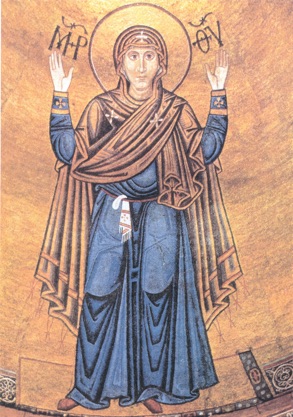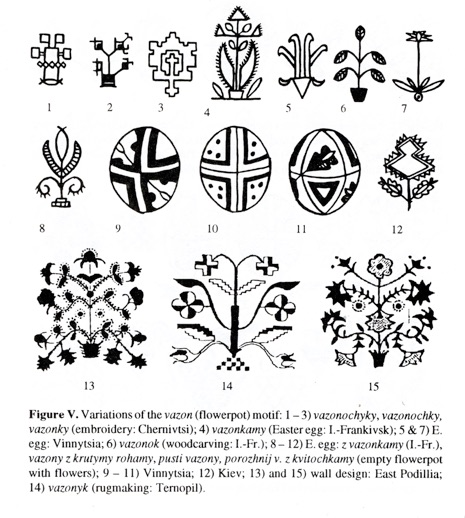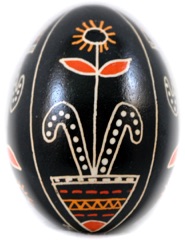Berehynia
Vazon

Berehynia
Vazon
On the previous page I showed one representation of the goddess, the Oranta, depicted with arms upraised, with the arms vary in number but are always in pairs: 2, 4 or 6.

This is similar to the appearance of the Christian Oranta, like this one in S. Sophia’s cathedral in Kyiv:

Sometimes the berehynia has become abstracted, and is represented by a plant–vazon–the tree of life. Her arms become the branches and flowers, and she may be firmly rooted in a flowerpot. The pot itself is usually a rectangle, triangle or a rhomboid (symbolic of the earth), and is covered with dots (seeds) and dashes (water); occasionally the pot is minimal or missing entirely. Many branches grow on this potted plant, usually in a symmetric fashion, with leaves and flowers.


The vazon motif is a popular one, and can be seen on many different forms of Ukrainian folk art. Selivachov gives many examples in the illustration below:

1-3: embroidery
6: wood carving
4, 5, 7, 8-12: pysanky
13, 15: painted wall designs
14: kylym (rug-making)
More examples of vazon symbols found on pysanky:


We can find examples of the vazon motifs on the pysanky collected in various regions of Ukraine by Erast Binyashevsky. At the top of this page is an example from the Kyiv region.












1st row: Kyiv, Volyn, Podillia
2nd row: Kyiv, Hutsul (2)
3rd row: Hutsul, Zakarpattia, Kherson
4th row: Bukovyna, Kyiv, Pokuttia
These are examples of traditional pysanky with a tree of life/vazon motif:





The photos below give more examples of the vazon /tree of life motif, both on traditional pysanky, and on diasporan ones.
The Goddess and the Tree of Life
